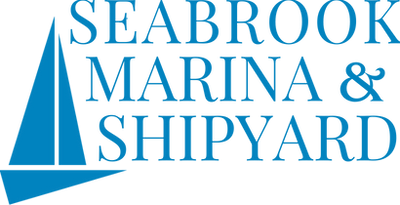CALL US AT (281) 474 2586 / SHIPYARD (281) 474-2588
CALL US AT (281) 474 2586 / SHIPYARD (281) 474-2588
SIGN UP FOR OUR LATEST NEWS
July 06, 2021
Title and registration numbers are required.
One US Coast Guard approved wearable device is required for each person on board. One US Coast Guard approved throwable device (Type IV) is required on board and readily accessible. Inflatable PFDs are authorized only when used according to the instructions on US Coast Guard approval labels.
Each wearable PFD should be readily accessible, in serviceable condition, and of the appropriate size for the intended user. Wearable devices should also be approved for the activity taking place and used according to the instructions on its label. Learn more about PFD fit and types.
Either of the following meets the fire extinguisher requirement:
If a vessel has a fixed fire extinguishing system, that will affect the number and type of fire extinguishers required.
The fire extinguisher must:
Visual distress signals that are US Coast Guard-approved for day and night use are required if operating in coastal waters of the state. Visual distress signals must be readily accessible, in working condition, and unexpired (if expiration date is shown).
To comply with Navigation Rules and for distress signaling purposes all boats must carry a sound producing device (whistle, horn, siren, etc.) capable of a 4-second blast audible for ½ mile. *Boats larger than 39.4 ft. are no longer required to have a bell (see Navigation Rules.)
* Under a recent change, a vessel 12 meters (39.4 ft) to less than 20 meters (65 ft) is no longer required to carry a bell on board.
US Coast Guard-approved red and green side lights and a white masthead and stern light are required when not at dock. The required navigation lights must be equipped as shown in Figure 1.

US Coast Guard-approved lights must be:
Any other lights on the vessel:
Ventilation systems are required of all vessels using liquid fuel that is volatile. Vessels that are of "open construction" are exempt. More information about ventilation requirements can be found in the Water Safety Act booklet.
Backfire flame arrestors are required for gasoline engines installed in a vessel after April 25, 1940. Outboard motors are an exception to this requirement.
An acceptable means of backfire flame control must be suitably attached to the air intake with a flame tight connection. The device must be US Coast Guard-approved or comply with SAE J-1928 or UL 1111 standards and be marked accordingly.
A motorboat must have an exhaust water manifold or a factory-type muffler installed on the engine.
A rearview mirror no less than four inches in width and height is required when towing a person.
A mirror is not required when towing a person if an observer is present who is:
Every vessel 26' or larger must display oil and garbage placards.
MORE INFORMATION:
POWERBOATS
11 Required Safety Equipment For Powerboats 40 Feet but Less Than 65 Feet In Length
10 Required Safety Equipment For Powerboats 26 Feet but Less Than 40 Feet In Length
SAILBOATS
4 Required Safety EquipmentSailboats 26 Feet but Less Than 40 Feet In Length
4 Required Safety Equipment For Sailboats 40 Feet but Less Than 65 Feet In Length
References:
Powerboats 40 Feet but Less Than 65 Feet In Length: Required Safety Equipment
July 15, 2025
Whether you're new to boating or have been cruising Seabrook’s Galveston Bay for years, docking remains one of the most nerve-wracking parts of the experience. Even seasoned captains occasionally fumble—but most mistakes are avoidable with a little know‑how. Here are the seven most common docking missteps and how to avoid them.
July 15, 2025
Whether you're new to boating or have been cruising Seabrook’s Galveston Bay for years, docking remains one of the most nerve-wracking parts of the experience. Even seasoned captains occasionally fumble—but most mistakes are avoidable with a little know‑how. Here are the seven most common docking missteps and how to avoid them.
June 30, 2025
As summer weekends become busy at our Seabrook marina, it’s essential to follow basic etiquette, ensuring our community remains safe, clean, and enjoyable for everyone.
